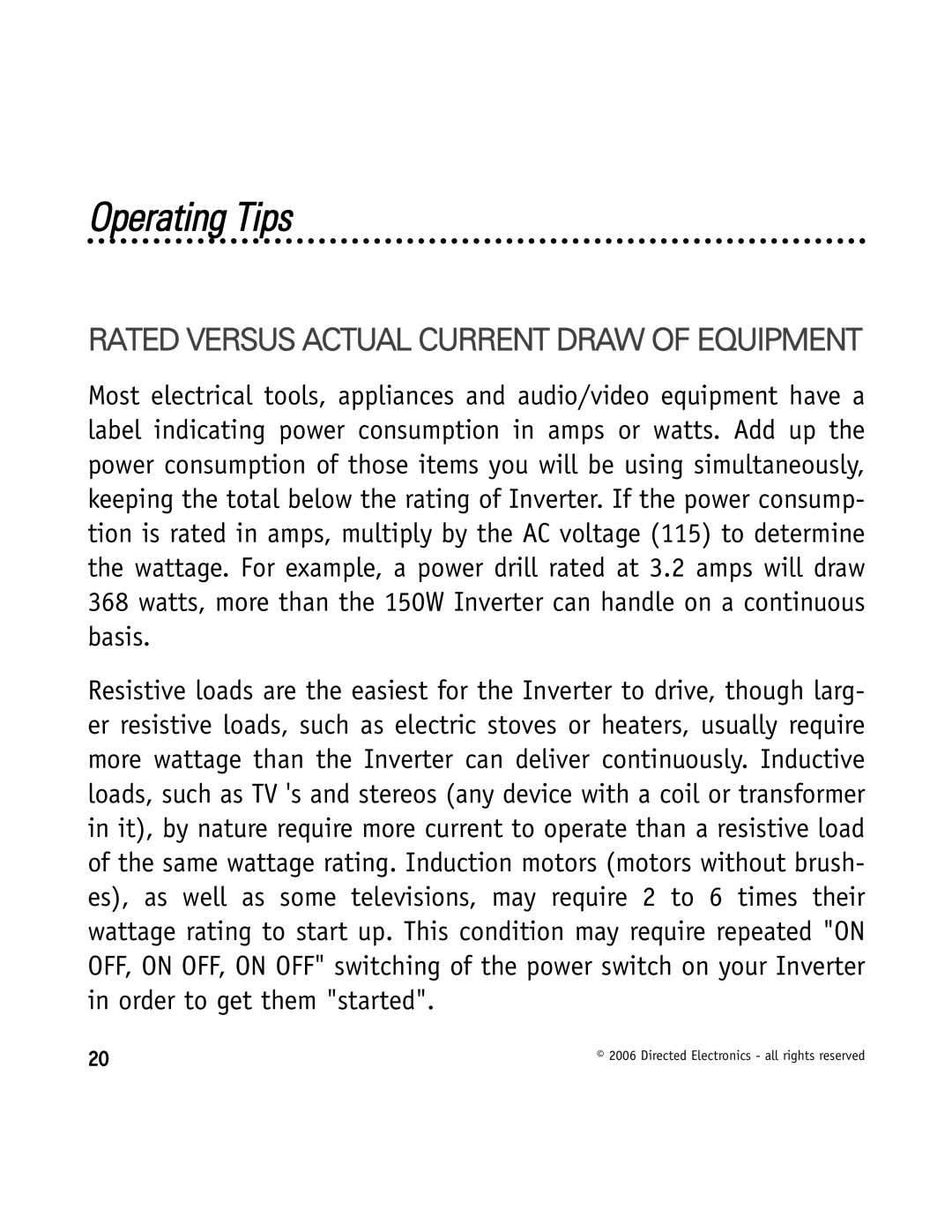Operating Tips
RATED VERSUS ACTUAL CURRENT DRAW OF EQUIPMENT
Most electrical tools, appliances and audio/video equipment have a label indicating power consumption in amps or watts. Add up the power consumption of those items you will be using simultaneously, keeping the total below the rating of Inverter. If the power consump- tion is rated in amps, multiply by the AC voltage (115) to determine the wattage. For example, a power drill rated at 3.2 amps will draw 368 watts, more than the 150W Inverter can handle on a continuous basis.
Resistive loads are the easiest for the Inverter to drive, though larg- er resistive loads, such as electric stoves or heaters, usually require more wattage than the Inverter can deliver continuously. Inductive loads, such as TV 's and stereos (any device with a coil or transformer in it), by nature require more current to operate than a resistive load of the same wattage rating. Induction motors (motors without brush- es), as well as some televisions, may require 2 to 6 times their wattage rating to start up. This condition may require repeated "ON OFF, ON OFF, ON OFF" switching of the power switch on your Inverter in order to get them "started".
20 | © 2006 Directed Electronics - all rights reserved |
